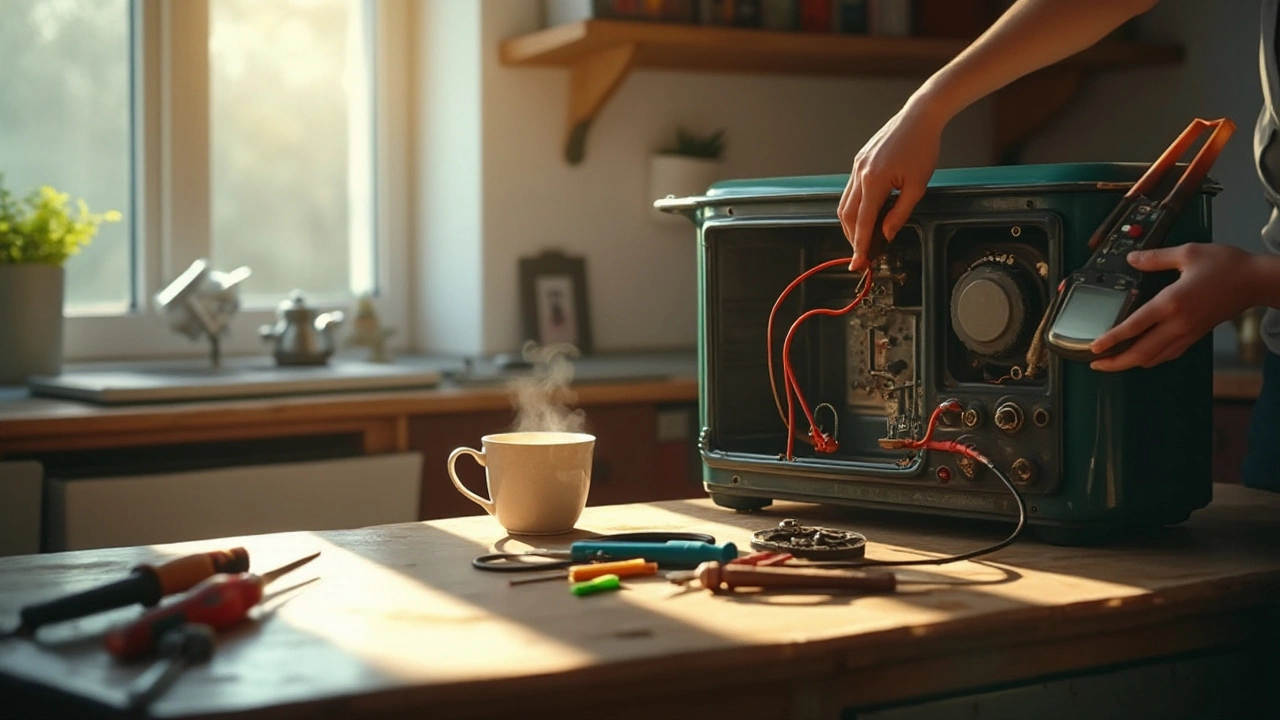DIY Repair: Quick Fixes for Everyday Appliances
Got a noisy washing machine, a oven that won’t heat, or a dishwasher that’s leaking? Before you dial a technician, try a few simple steps you can do yourself. You don’t need a degree in engineering—just the right tools, a bit of patience, and a safety‑first mindset.
Essential Tools and Safety First
Start with a basic kit: screwdrivers (flat‑head and Phillips), pliers, an adjustable wrench, a multimeter, and a flashlight. A set of Allen keys can be handy for appliances with hidden screws. Always unplug the device or turn off the circuit breaker before you begin. If you’re working with gas appliances, shut the gas valve and ventilate the area. A quick safety check prevents accidents and saves you from costly damage.
Common Fixes You Can Do Today
Washing machine won’t spin. Check the lid switch first—most machines won’t run if the lid sensor thinks it’s open. If the switch clicks but the machine still stalls, inspect the drive belt for wear or breakage. Replacing a belt is usually a 10‑minute job.
Oven not heating. Unplug the oven, remove the rear panel, and locate the heating element. Look for visible cracks or burnt spots. A multimeter set to resistance can tell you if the element is dead (you’ll see infinite resistance). Swapping the element is straightforward: unscrew the old one, connect the new, and reassemble.
Dishwasher leaks. The most common culprit is a worn‑out door gasket. Pull the gasket out, clean any grime, and inspect for cracks. If it’s damaged, snap a new gasket into place. Also, tighten the clamps on the spray arm; loose clamps can cause water to spray where it shouldn’t.
Microwave won’t start. First, test the door latch. If the latch sensor isn’t engaging, the microwave’s safety circuit will stop it from running. Replace the latch mechanism or clean any debris. If the problem persists, the door switch may need a new coil—simple to swap with a screwdriver.
When you’re unsure, take a photo of the broken part and compare it to online diagrams or the appliance’s manual. Most manufacturers publish PDFs that show where each component lives and how to remove it.
Remember, not every fix is worth the effort. If a part costs more than half the price of a new appliance, or if you encounter electrical components you’re not comfortable handling, call a professional. South Shields Appliance Repair Services can step in fast, saving you time and avoiding safety risks.
Finally, keep a maintenance log. Jot down what you fixed, when, and what parts you used. Over time you’ll spot patterns—like a fridge that always freezes the freezer section—and you can address the root cause before it breaks down again.
DIY repair can keep your home running smoothly and your wallet happy. With the right tools, a little know‑how, and a cautious approach, you’ll handle most minor appliance hiccups without a callout. Happy fixing!


